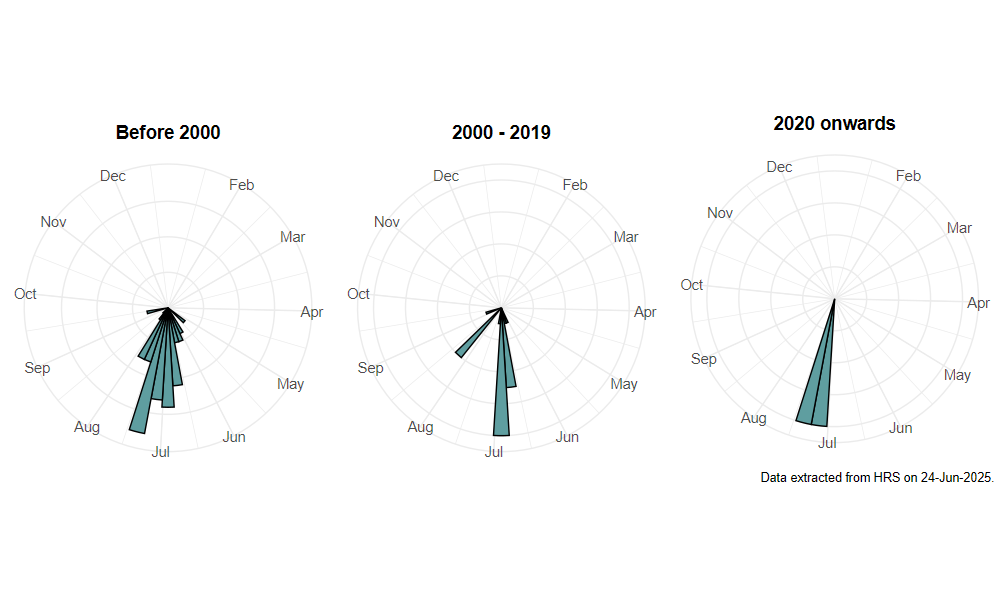Lejops vittatus (Meigen, 1822)
Identification
Identification difficulty = 2. ![]()
![]() according to Ball & Morris, 20241
according to Ball & Morris, 20241
Synonymy
Helophilus vittatus Meigen in Coe(1953)2.
Biology
There is a continental account of larval development; eggs are laid on the stems and leaves of emergent vegetation and larvae remain amongst surface vegetation until the last instar, at which point they migrate to submerged organic deposits. In Britain the majority of localities are permanently wet grazing marsh ditches with stands of Sea Club Rush Scirpus maritimus and with fluctuating levels of brackish water. Adults are known to feed on pollen from the flower heads of Sea Club Rush and can occasionally be found in numbers by sweeping.
Flight period
The following plots show the number of unique records per week excluding those reported to be of immature stages.

Status
Lower Risk (Near Threatened) - Ball & Morris, 20143. Vulnerable (RDB2) - Falk, 19914 and Shirt, 19875.
Distribution
There are records from the south and east coast, from Norfolk to Sussex. It also occurs on the grazing marshes of the Gwent Levels and Somerset. Very old records from inland localities suggest more widespread distribution in the past. There are post-1990 records from Norfolk, South Essex, East Kent, East Sussex and Somerset Levels, with the bulk of records from East Kent.

-
Ball, S., & Morris, R. (2024). Hoverflies of Britain and Ireland. WILDGuides (3rd ed.). Oxford: Princeton University Press. ↩
-
Coe, R. (1953). Diptera: Syrphidae. Handbooks for the Identification of British Insects, 10(1), 1–98. ↩
-
Ball, S., & Morris, R. (2014). A review of the scarce and threatened flies of Great Britain. Part 6: Syrphidae. ( No. 9). Species status (pp. 1–130). Peterborough: JNCC. ↩
-
Falk, S. (1991). A review of the scarce and threatened flies of Great Britain. ( No. 39). Research and Survey in Nature Conservation (pp. 1–194). Peterborough: NCC. ↩
-
Shirt, D. (Ed.). (1987). Red Data Books: 2. Insects. Peterborough: NCC. ↩